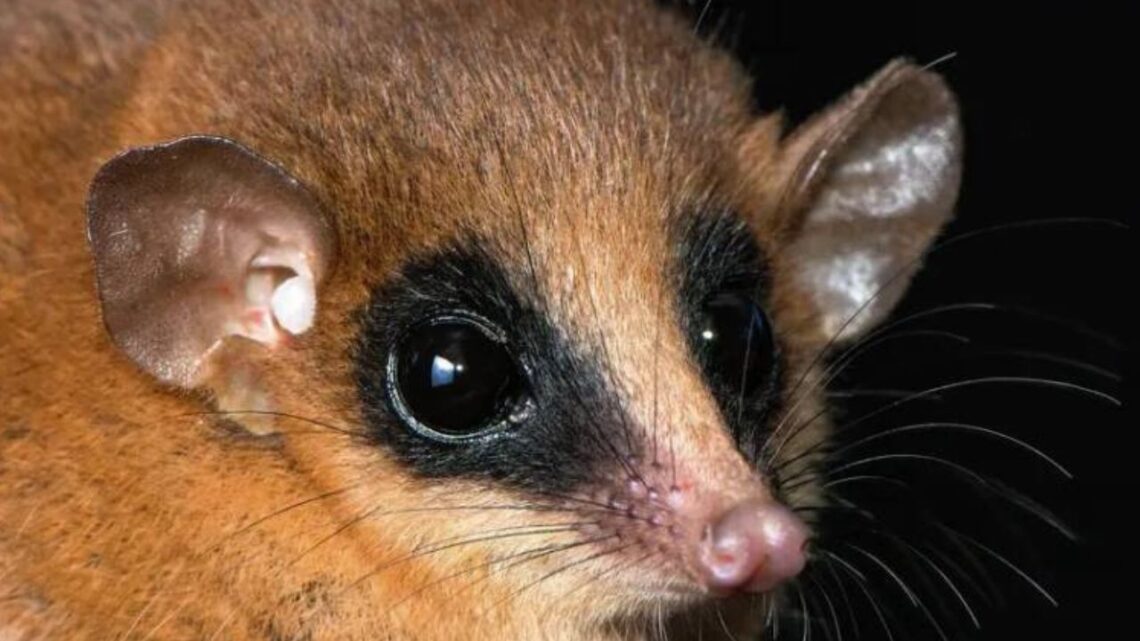Imagine hiking high up in the Peruvian Andes and suddenly spotting a tiny, furry creature you’ve never seen before. That’s exactly what happened to a group of scientists on a mission in northern Peru.
Their surprising discovery turned into a big announcement: a brand-new marsupial species for science. In this article, we’ll explore how this animal was found, why it is so special, and what it tells us about life in remote forests.
The Surprise in the Andes
Discovery in a Remote Park
In 2018, an archaeological team was exploring Río Abiseo National Park in northern Peru, at an altitude of about 2,664 meters (nearly 8,740 feet).
They expected to find a rare squirrel species, but instead one of them saw something unexpected—a small animal with reddish fur and big eyes, looking quite unlike the usual forest creatures.
The creature was only about 10 centimeters (4 inches) long. It had facial markings that looked like a mask, and its reddish-brown coat stood out. Because of its features and the high altitude, the researchers realized it didn’t match any known mouse opossum species, which usually live in lower regions.
Scientific Verification
Finding a strange animal is just the first step. Over several years, the team carefully compared its DNA and physical features with those of specimens in museums all over the world. They checked bones, fur, skulls, genetic codes—everything they could.
Their work proved this was indeed a new species. In June (the year wasn’t mentioned in the original text), the researchers published their findings in the journal American Museum Novitates. That formalized the name and description of the species.
The new species was named Marmosa chachapoya, in honor of the Chachapoya people, an ancient civilization that lived in this part of the Andes between 800 and 1470 AD. The region is rugged, forested, and full of cloud cover—very fitting for a creature that seems adapted to remote, high forests.
Why Marmosa chachapoya Is Important
Biodiversity in Protected Areas
This discovery highlights how much we still don’t know about Earth’s biodiversity. The same research team has spotted other creatures possibly new to science, including a semi-aquatic rodent still being studied.
The presence of such animals in Río Abiseo National Park shows how crucial protected areas are for preserving unknown species.
The park is also home to rare creatures like the yellow-tailed woolly monkey, once thought to be extinct. Discoveries like Marmosa chachapoya confirm that these forests hold many secrets yet to be discovered.
Questions We Don’t Yet Know
So far, only one specimen of Marmosa chachapoya is known. That leaves many questions unanswered:
| Question | Why It’s Important |
|---|---|
| Where else does it live? | To understand its range and habitat needs |
| What does it eat? | To know its role in the ecosystem |
| What are its habits? | Nocturnal? Tree-dwelling? Ground-dwelling? |
| How many are there? | To assess whether it is endangered |
| How does it reproduce? | To see if it follows typical marsupial patterns |
Until more specimens are found, answers to many of these questions will remain uncertain.
Marsupials: Strange but Fascinating Mammals
How Marsupials Are Different
Marsupials are a group of mammals with a special way of having babies. Unlike placental mammals (like humans, dogs, or elephants) that grow their young inside a uterus with a placenta, marsupials give birth to very tiny, underdeveloped infants.
These newborns are often blind, hairless, and helpless. Right after birth, they must crawl into their mother’s ventral pouch, also called the marsupium. Inside the pouch, they latch onto a teat (nipple) and continue growing for weeks or months until they can survive outside.
This method gives some evolutionary advantages. By giving birth early, the mother avoids the burden of long gestation. That can be helpful when environmental conditions change or when resources are scarce.
Where Marsupials Live
Today, most marsupial species live in Australia and the Americas. Famous examples include kangaroos, koalas, and opossums. Their distribution shows how they spread across different continents and adapted to a wide variety of ecosystems.
The discovery of Marmosa chachapoya in the Andes adds a unique chapter to the story of marsupials in the Americas—one that proves these animals still have surprises in store for us.
What This Discovery Teaches Us
- Exploration still matters — Even in the 21st century, remote places can hold unknown species.
- Conservation is critical — Protected forests like Río Abiseo serve as safe havens for unknown life.
- Patience in science — It may take years to confirm a new species through DNA and detailed study.
- Nature’s mysteries remain — With only one known specimen, the secrets of Marmosa chachapoya are just beginning to unfold.
The discovery of Marmosa chachapoya in the Peruvian Andes reminds us how much is left to learn about our planet’s creatures. From its reddish fur and mask-like face to its high-altitude home, this tiny marsupial is a symbol of unseen biodiversity.
Science took years of careful investigation—of DNA comparisons and morphological study—to confirm it as a new species.
This find underlines the importance of protected areas, scientific exploration, and nature conservation. Though we only know one individual so far, future studies may reveal more about its habits, range, and survival.
As we continue to explore remote forests, who knows what other unknown animals lie waiting to be discovered?









